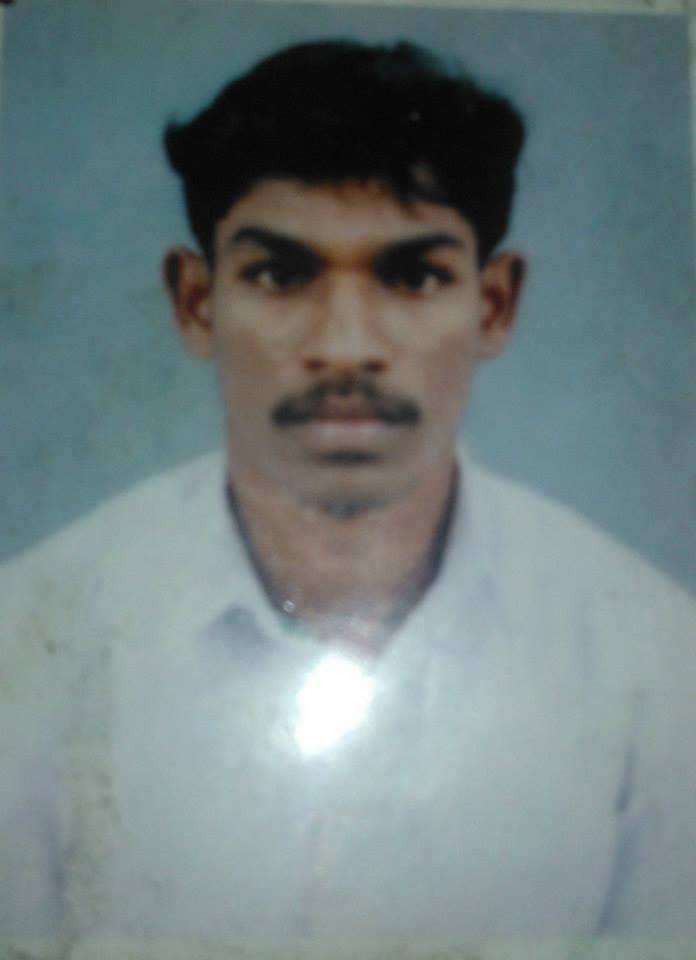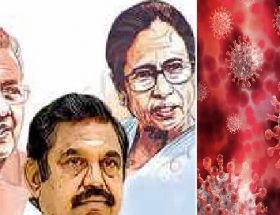Dr. Sylvia Karpagam
 “If India’s politicians had any connect with land and farming, they would understand the organic relationship farmers have with livestock, milk, manure and killing of cows. It is not a Hindu-Muslim issue as the government is trying to project. This is a farmer’s issue”
“If India’s politicians had any connect with land and farming, they would understand the organic relationship farmers have with livestock, milk, manure and killing of cows. It is not a Hindu-Muslim issue as the government is trying to project. This is a farmer’s issue”
~ A farmer in Karnataka about the anti-cow slaughter Bill
The post Covid-19 lockdown has brought out the worst of vested interests. While corporates are scrambling to acquire land and assets by blatantly pushing the government to tweak or do away with protective legal mechanisms, the government is making decisions that will have adverse and long-term social, nutritional, health and economic consequences. One of them is the anti-cow slaughter bill, which the Karnataka government has passed with great urgency, without even a pretence of due process of democratic consultation, particularly with those who will be the most disaffected by this law. Any reasonable, fairly intelligent voter of the state should challenge this Bill, which is neither evidence-based nor rational, and viewed in the backdrop of the following issues.
1. Denial of basic nutritional rights
Karnataka has dismal indicators when it comes to nutrition. According to the National Family Health Survey [NFHS 4](2015), 39% children, especially those from the Scheduled Castes (SC) and Scheduled Tribes (ST) communities1, are stunted (less height for age) while 40% are undernourished (less weight for age). Anemia is 56% in children before starting their school life at 6 years. Only a miserable 8.2% of 6 to 23-month are adequately fed and one of four adults have a Body Mass index below 18.5.
Nutrition indicators in Karnataka (2015-16) among Children < 5 years (National Family Health Survey 2015)

Even prior to the lockdown, Karnataka had an unstable mid-day meal scheme, in spite of this being a legally mandated right of every child going to government or government aided schools under the National Food Security Act (NFSA) 2013. The scheme was already teetering under centralised contracts to Akshaya patra/ISKCON2 which seems to be constantly lumbering through large scale fraud, conflict of interest, pilferage, religious indoctrination and failure to abide by fairly straightforward norms. Following lockdown, the government has not provided the legally mandated mid day meals or rations to the children of the state, from June to November 2020 (a period of six months).

A majority of the children in government schools in Karnataka are from marginalised communities SC/ST/OBC3.
The state supported Ksheera Bhagya scheme which provided 150 ml of hot milk to school-going children was also summarily stopped from June 2020 onwards. It is also to be noted that nutritionally superior eggs had been denied to children as part of MDM only on the pretext that “they were already being given milk’!! In effect, during the lockdown, all animal sources of food had been withdrawn from the mid-day meal for children. As a consequence, malnutrition in the state is going to increase even further, with a resurgence of several serious nutrition deficiency diseases, complicated by breakdown of regular immunisation during lockdown.
It is in this backdrop of dire nutritional crisis that the anti-cow slaughter bill should be viewed. 15% (or 180 million) Indians consume beef. This includes Dalits, Muslims, Christians, Other Backward castes (OBCs) and adivasis. Beef is one of the cheapest sources of animal foods and one kg is about Rs. 250/- compared to mutton which is about Rs. 800/kilo. Organ meat is even cheaper and also nutritionally dense. In fact, the grass fed Indian beef is much sought after in other countries because it is lean unlike the stall fed cattle.
Nutritional benefits of beef
Some of the key nutrients obtained from beef are listed in table 1.This is not an exhaustive list.
100 gm of lean beef provides (Source USDA SR-21)

• Superior quality protein comprise almost 26-27% of beef and 100 gm of lean beef provides almost 54% of the daily requirement of protein, containing all the nine essential amino acids, important for building muscle mass, other tissues, enzymes, hemoglobin, cartilage, ligaments, antibodies, hormones etc. With poor dietary quality or quantity of proteins, functioning of all these are adversely affected. Although soya bean contains high quantity of protein, this has poor bioavailability and digestibility
• Fatty acids are required for cellular energy, biosynthesis of tissue membrane, hormones etc. Fat, as part of the diet, is also essential for absorption of fat soluble vitamins like A,D,E and K. (It cannot be taken separately as a kashaya or tablet) 100 gm beef can provide almost 46 mg of omega 3 fatty acids and 401 mg of omega 6 fatty acids.
• Pyridoxine or Vitamin B6 is vital for metabolism of fats, proteins and carbohydrates. It helps in synthesis of neurotransmitters and hemoglobin. 100 gm of beef provides almost 21% of the daily requirement (0.6 – 2.5 mg) of this vital nutrient.
• Riboflavin deficiency can cause redness and burning of the tongue, cracks (and bleeding) at the angle of the mouth, scaling of skin between the nose and angle of lips. Cereals are a particularly poor source of riboflavin and diets devoid of animal source foods cannot provide adequate quantities of this vitamin. Of the daily requirement of 0.7-2.2 mg per day, 100 gm beef provides 0.2 mg or approximately10 – 15%.
• Iron deficiency anemia (IDA) during pregnancy leads to increased maternal hemorrhage and premature birth and in children, serious consequences for cognitive, psychomotor, physical and mental development. Beef contains heme iron which is better absorbed than non heme iron from plant foods which has inhibitors like phytates, polyphenols, calcium and phosphates etc. Apart from iron, Vitamins A, B2, B6, B12. C,E and folate along with zinc and selenium must be present in adequate quantities for hemoglobin synthesis. So just replacing iron in the form of tablets is not good practice, inspite of being followed diligently by medical doctors.
• Zinc is an essential trace element in the body required for growth, fertility, immune function, taste, smell, wound healing. Animal foods are the most abundant sources of zinc and lean red meat can give approximately 40 mg zinc/kg. Green leafy vegetables and fruits are the poorest sources of zinc with concentration of <10 mg/kg.
• Vitamin A is required for immune function, vision and reproduction. Preformed Vit A, found in animal source foods has superior bioavailability than carotene found in plant sources. Subclinical VAD in preschool children in India is 62%and inadequate dietary intake is the most important cause. Beef liver is one of the richest natural sources of preformed Vitamin A.
• Vitamin B12 (cobalamin) is found only in animal foods, particularly organ meats. It is important for mood, cognition, brain/neural regeneration, sleep, skin, sleep etc. In low quantities, it can cause depression, sleep disturbances, mental health issues and neurological manifestations. 100 gm of beef provides 48% of daily requirements (2.8 mcg) of B12. (I challenge any ‘pure’ vegetarian to demonstrate ONE plant based food to match this)
• Calcium is required for the development and maintenance of the skeleton and teeth, but also for many essential functions such as muscle and heart contraction, nervous system, blood clotting etc. Leafy vegetables contain oxalates which form insoluble calcium that cannot be absorbed. This is similar to phytates in cereals. Betel leaves with lime (calcium hydroxide) can provide some calcium. Vitamin D helps in absorption of calcium and can be obtained by exposure to the sunlight for about 15-20 min everyday twice a week without sunscreen. Low levels of Vitamin D can cause rickets in children and osteomalacia/osteoporosis in adults. Osteomalacia can cause severe bone pain and deformity while osteoporosis can increase the risk of fractures. Deficiency of Vitamin D due to quarantine/self isolation during the Covid pandemic, has been known to aggravate complications.
• Phosphorus is closely linked to calcium as calcium phosphate. It is also important for cellular metabolism. Phosphorus from cereals, pulses, nuts and oilseeds are bound to phytin and therefore poorly available for absorption. 100 gm of beef can provide 22% of the daily requirement of phosphorus in an absorbable form.

These images of a child picked up in an urban dalit settlement – Phrynoderma or toad skin due to deficiency of Vitamin A, essential fatty acids, pyridoxine etc. It often co-exists with other nutritional deficiencies.
In Indian villages, one cow, when killed, can feed many families over days especially when dried or pickled. While banning cow slaughter in one fell sweep, has the government made alternative arrangements for these families? Are they somehow of lesser consequence than the cows of the state? It is no coincidence that it is these very same communities that will be targeted by brutal lynch mobs. While on the one hand farmers face the prospect of economic downturn because of the anti-cow slaughter Bill, extortion, harassment and exploitation by vigilante gangs are also being enabled by the government.
In conclusion
Beef is a nutritional superior food, with beef liver scoring even higher. For a child, a meal with a beef in it is a treat. For a mother, it’s a child who has eaten a full meal. For a nutritionist, it is a nutritionally dense meal. For a doctor, it means better immunity, lesser malnutrition, fewer infections and lesser mortality. For the BJP, it is nothing more than vote bank politics. For the vapid elite of the state, it is nothing more than an armchair discussion. Elite ‘vegetarians’ can tut tut over their palak paneers and curd rice while bemoaning how people should ‘respect the law’. What is a law if it is criminalises people’s nutritional rights and paves the way for unscrupulous lynch mobs to target some of the most vulnerable communities? Does social fabric , justice, fraternity, equality matter in Karnataka or do ‘rights’ vary based on one’s class, caste and religious location??
~
Notes
1. India, with a population of one billion has 16.2% (166 million) of the population from dalit or Scheduled Castes (SC) communities . Karnataka has a population of 52 million with SC population of 8 million (16.2%).
2. The International Society for Krishna Consciousness (ISKCON), known colloquially as the Hare Krishna movement or Hare Krishnas, is a Gaudiya Vaishnava religious organisation
3. Joshi S “White paper: Provisioning of eggs in mid-day meals in Karnataka”, AharaNammaHakku, 10th February 2019, https://aharanammahakku.home.blog/2019/02/10/white-paper-provisioning-of-eggs-in-mid-day-meals-in-karnataka/
~~~
Dr. Sylvia Karpagam is a public health doctor and researcher. This article was first published in a modified form in The Quint
For authentic information on Animal Source Foods (ASF) please refer to https://aleph-2020.blogspot.com/ of which the author is one of the expert contributors









